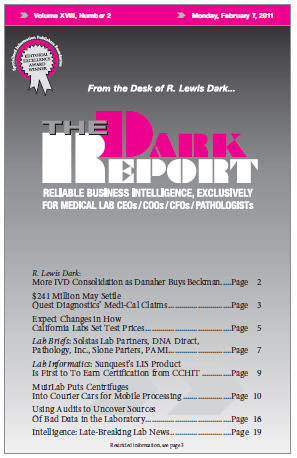SPECTRUM-CARILION NOW WILL BE CALLED SOLSTAS LAB PARTNERS IT IS THE NEXT STEP IN THE INTEGRATION of Spectrum Laboratory Network and Carilion Laboratories. Effective February 1, 2011, their combined businesses will use the name Solstas Lab Partners. Both Spectrum Lab Network, located in Greensboro, North Carolina, and Carilion, based in Roanoke, Virginia, were acquired by …
Solstas Lab Partners, DNA Direct, Pathology, Inc., Slone Partners, PAML Read More »
To access this post, you must purchase The Dark Report.


